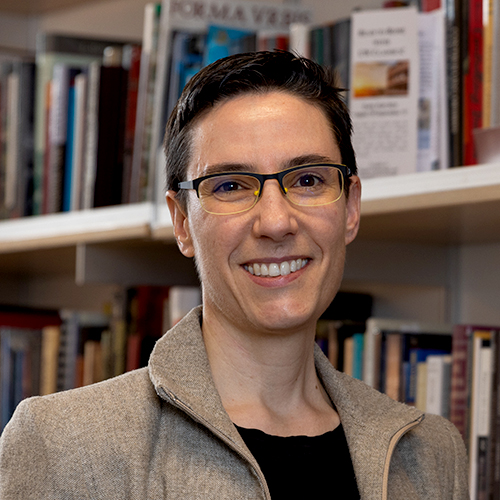When and how the first humans made their way to Australia has been an evolving story.
While it is accepted that humans appeared in Africa some 200,000 years ago, their arrival in Australia has been less clear. Scientists in recent years have placed the approximate date of human settlement in Australia further and further back in time, as part of ongoing questions about the timing, the routes, and the means of migration out of Africa.
Recently a team of researchers, including UW professor Ben Marwick and seven UW students, found and dated artifacts that indicate humans arrived in Australia about 65,000 years ago — more than 10,000 years earlier than previously thought. Marwick, associate professor of anthropology, says the new date makes a difference because it calls into question popular theories that humans caused the extinction of unique megafauna in Australia — such as giant kangaroos, wombats and tortoises — more than 45,000 years ago.

“Previously it was thought that humans arrived and hunted them out or disturbed their habits, leading to extinction,” says Marwick, “but these dates confirm that people arrived so far before that they wouldn’t be the central cause of the death of megafauna. It shifts the idea of humans charging into the landscape and killing off the megafauna. It moves toward a vision of humans moving in and coexisting, which is quite a different view of human evolution.”
Since 1973, digs at Madjedbebe, a rock shelter in Australia’s Northern Territory, have unearthed more than 10,000 stone tools, ochres, plant remains, and bones. Following the more recent excavations in 2012 and 2015, a University of Queensland-led research team, which included the UW, evaluated artifacts found in various layers of settlement using radiocarbon dating and optical stimulated luminescence (OSL).
The new research involved extensive cooperation with the Mirarr, the local Aboriginal community. The Mirarr were interested in supporting new research into the age of the site and in knowing more about the early human occupants, particularly given environmental threats posed by nearby modern-day mining activities. Through a formal agreement, the Mirarr had control over the excavation as senior custodians, which included oversight of the excavation and curation of the finds.
...it calls into question popular theories that humans caused the extinction of unique megafauna in Australia...
Noteworthy among the artifacts found were ochre “crayons” and other pigments, edge-ground hatchets believed to be the world’s oldest, and evidence that these early humans ground seeds and processed plants. The pigments indicate the use of paint for symbolic and artistic expression, while the tools may have been used to cut bark or food from trees.
The artifacts were analyzed in labs in Australia and at the UW. In Australia, OSL was used to identify their age. Radiocarbon dating, which requires a certain level of carbon in a substance, can analyze organic materials up to about 45,000 or 50,000 years old. But OSL is used on minerals to date, say, the last time a sand grain was exposed to sunlight — helpful in determining when an artifact was buried — up to 100,000 years ago or more.
At the UW’s geoarchaeology lab, a UW graduate student and six undergraduates tested sediment samples that Marwick helped excavate at Madjedbebe. Using a scanning electron microscope and other techniques, they were able to create a picture of the environments across the sedimentary layers of the site, finding that northern Australia was wetter and colder when these human ancestors arrived.

“Together, we were working on establishing questions: What kind of environments did these people live in? What was the climate like? Were there any disturbances to the site, and were artifacts mixed up from different ages?” Marwick says. “I’m proud of being able to involve UW students in this research in a really substantial way.”
One of the authors, Mara Page, was a senior double-majoring in archaeology and Earth and space sciences when she joined the project. She analyzed stable carbon isotopes found in sediment, which can reveal the types of plants present in the past and the kinds of environments they lived in. She determined that the vegetation at Madjedbebe remained stable during the time of human occupation, which suggests that there was no major environmental change that might have prompted humans to leave the area.
“I feel that I contributed something important by being able to rule something out of the story we were telling,” Page explained.
By placing the date of Australian settlement at around 65,000 years ago, researchers confirm some of the shifting theories about when the first humans left Africa. A common view is that humans moved into Asia 80,000 years ago; if they migrated to Australia some 15,000 years later, it means those ancestors co-existed with another early human in Asia, Homo florensiensis. It also means these early Australians preceded early Europeans, who are believed to have entered that continent 45,000 years ago.
A related question is whether these early human species left Africa at one time, gradually spreading the population through Asia, Europe, and Australia, or whether there were multiple waves of migration. Marwick believes the Madjedbebe results support the theory that Homo sapiens, the species of modern-day humans, evolved in Africa before dispersing to other continents. The findings also suggest Homo sapiens‘ predecessors, Neanderthals and Denisovans, overlapped with humans for a long period of time, and suggest a larger role for Australia, and the Eastern Hemisphere in general, in the story of humankind.
The research was funded primarily by the Australian Research Council, as well as the Australian Institute of Nuclear Science and the Australian Government’s National Collaborative Research Infrastructure Strategy. Marwick and his students were also supported by the German Academic Exchange Service, the UW-UQ Trans-Pacific Fellowship program, the UW Royalty Research Fellowship, and the UW Quaternary Research Center.
. . .
This article is an abbreviated version of a story published by UW News on July 19, 2017.
More Stories

The Truth About Public Speaking
Becoming an effective public speaker requires planning and practice. Professor Matt McGarrity and consultants at the UW Center for Speech & Debate are available to help.

Lifting Marginalized Voices — from Ancient Rome
"Interesting, frustrating, and necessary,” is how Sarah Levin-Richardson, professor of Classics, describes her research into the lives of enslaved individuals in the ancient world.

Mentorship for Black Professionals, Earbuds Not Included
Identity Unboxed, a podcast created by alums Tiana Cole and Brad Blackburn III, explores the experiences of Black professionals in the Seattle area.